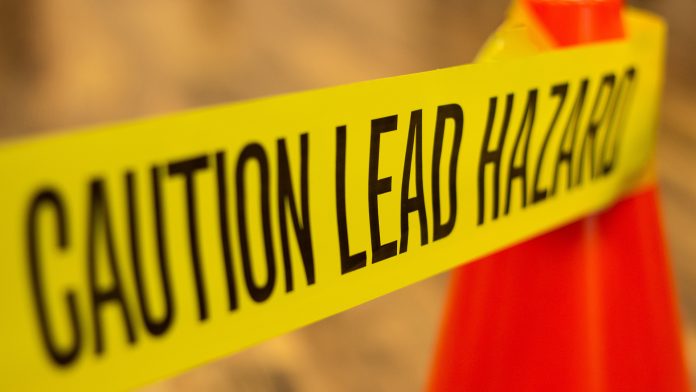
The 10th International Lead Poisoning Prevention Week (ILPPW) is currently taking place. ILLPW aims to raise awareness about lead poisoning and encourages countries to act against lead exposure.
An estimated one million people die of lead poisoning across the world each year. Millions more face exposure to low levels of lead, many of whom are children. This exposure can lead to lifelong health problems such as anaemia, hypertension, immunotoxicity and toxicity to the reproductive organs. Lead poisoning can also cause irreversible neurological and behavioural effects.
The World Health Organization (WHO) states that there is no safe level of exposure to lead and aims to terminate exposure for all individuals with a blood lead level of more than 5ug/dl. According to UNICEF, one in three children – around 800 million globally – have blood levels of 5ug/dl or above. These alarming statistics highlight the need for urgent global action.
Lead poisoning causes significant risk to children
“Lead exposure is especially dangerous to children’s developing brains and can result in reduced intelligence quotient (IQ), attention span, impaired learning ability, and increased risk of behavioural problems,” said Dr Maria Nera, WHO Director, Department of Environment, Climate Change and Health. “This preventable harm to children’s brains leads to a tragic loss of potential,” she added.
Lead is harmful to multiple body systems, including the central nervous system and brain, the reproductive system, kidneys, the cardiovascular system, the blood system, and the immune system. Some estimates suggest that lead poisoning has accounted for 21.7 million years lost to disability and death worldwide, due to these effects. WHO has estimated that 30% of idiopathic intellectual disability, 4.6% of cardiovascular disease and 3% of chronic kidney diseases can be attributed lead poisoning.
Heavy industry is a common source of lead exposure and is particularly common in developing nations. Industries that involve mining, smelting, recycling of electronic waste and lead-acid batteries and plumbing pose a significant risk, especially to children and adolescents. However, exposure also takes place in a non-industrial setting such as hospitals, playgrounds, and homes.
Who has made progress in ending global burden
“We have made significant progress. The world has seen a significant reduction in the use of lead in paint in the last ten years with more than 84 countries now having legally binding controls to limit the production, import and sale of lead paints,” said Lesley Onyon, Unit Head, Chemical Safety, Department of Environment, Climate Change and Health.
“We also now have a global ban on leaded petrol. But there is still more work to be done. Lead poisoning is entirely preventable through a range of measures to restrict use of lead and to monitor and manage exposures. That is why this year we are widening the scope to prevent all sources of lead exposure”.
WHO has identified lead as one of the ten chemicals of major public health concern and called for action by all by member states to protect the health of workers, children and women of reproductive age.
WHO has urged all countries to ban lead paint and to identify and eliminate all sources of childhood lead exposure. They have encouraged nations to educate the public regarding the dangers of misusing lead-containing products.








